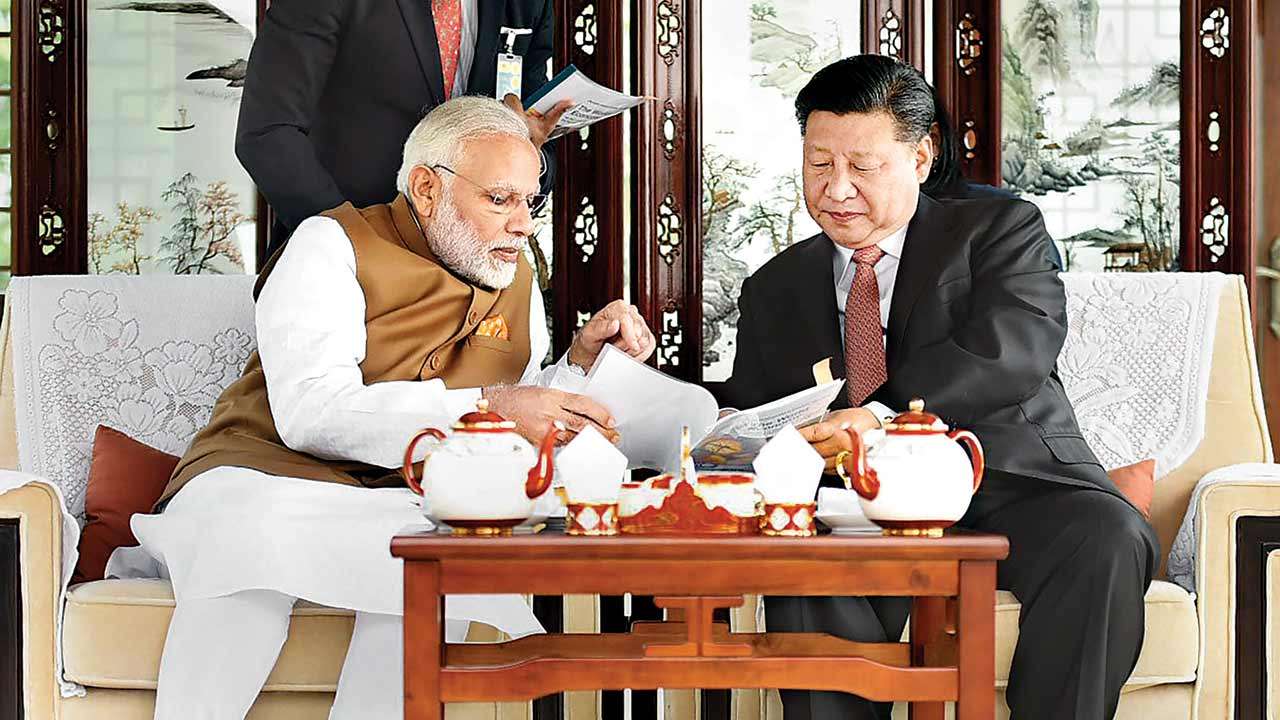
China’s string of pearls is now passe. With Pakistan, Nepal, Sri Lanka and the Maldives in its bag (and Bangladesh and Burma in the outer pocket), the new strategy is a combination of wooing the regime leadership with funds and increasing indebtedness and political manipulation. China’s deep pockets and smart delivery are countering India’s ‘Neighbourhood First’ policy. In the meanwhile, China’s ingratiating itself with the host country has been facilitated by India’s reactive diplomacy. This worked when China was a distant player, not when it is a veritable South Asian power.
Look at what India has achieved in the last decade in Nepal, geo-strategically the most important country for India. India has facilitated every major change in Nepal: the restoration of monarchy in 1950; ushering in multi-party democracy, first in 1959 and later in 1990; mainstreaming the Maoists after the civil war and dismantling monarchy in 2006 and holding of elections for the Constituent Assembly in 2008.
China, on the other hand, did a somersault, first disowning the Maoists and then becoming their ideological comrade once they came to office. They pledged never to interfere in the internal affairs of Nepal and then did an about-turn. India’s strategic errors commenced with losing the plot when upper caste Nepali hill leaders were drafting the constitution and map-making — grouping districts into provinces in 2015 and giving short shrift to Madhesis as they were alleged to be Indian agents. Instead of the promised, Ek Madhes Ek Pradesh, it was a moth-eaten No 2 province that was inherited by the Madhesis. They were cheated of their legitimate rights in the constitution. New Delhi was late in waking up and began fire-fighting at the very last minute. Ordering the government to incorporate changes in the constitution before it was to be promulgated was a public assault on Nepal’s sovereignty and led to the most potent and unprecedented anti-India campaign, which led to the Unified Marxist Leninists winning the local and municipal elections.
The second blunder was the failure to detect and pre-empt the Chinese-orchestrated formation of the Left Alliance — of UML and Maoists — before the provincial and parliamentary elections, which the Left Alliance swept. Their merger with the Communist Party of Nepal, left the pro-India Nepali Congress out in the cold and the Madhesis divided. There is no doubt that for the next five years, the CPN will rule Nepal uninterruptedly and China will dig into what was once India’s Himalayan citadel.
The Chinese are to provide funds for the development of Jhapa, the home district of Nepal’s Prime Minister KP Oli. They have gifted nearly $100 million for dams and embankments for all the nine flood-prone rivers in Jhapa, an industrial park, the world’s largest Buddha and a Buddha University. China is using culture and religion to promote its interest. The Belt and Road Initiative (BRI) is still to follow.
In Sri Lanka, where the Chinese were facing a push-back during the last three years after President Mahinda Rajapaksa lost the elections, they are now once again back in the reckoning, following the sweeping victory by Rajapaksa’s Joint Opposition in the local elections in February this year, with Chinese help. Ever since, the pro-India National United Government, led by President Maithripala Sirisena and Prime Minister Ranil Wickremesinghe, is in a disarray. So much so, that the two leaders may contest the presidential elections due at the end of 2019. The horse the Chinese are backing is Rajapaksa’s younger brother Gotabhaya, who had proved his leadership and go-getter skills during the war against the LTTE. The Chinese have made themselves indispensable in Sri Lanka through the BRI by constructing expressways, the Hambantota Port (in which they have a stake of 90 per cent and a lease of 99 years), the Rajapaksa Mattala airport, Colombo’s new financial Port City in which they also own a long-term stake, a pier at Colombo Port and numerous other projects overshadowing India’s slow and inconspicuous development works in the war-ravaged Tamil-inhabited north.
There was a de facto red line dividing the north and south between India and China, which Beijing is trying to breach. In a game of balancing China’s strategic acquisitions, the current regime has allowed India to deploy a consulate near Hambantota to keep an eye on Chinese commercial activities at the port. Hambantota itself is being transformed into Sri Lanka’s Southern Naval Command by relocating it from Galle. The Mattala airport next to Hambantota is called the world’s emptiest airport. It is being handed over as a joint venture to India with 70 per cent stake and a 40-year lease to get the port going. Incidentally, Hambantota port was first offered to India for development, but it let the opportunity pass. India has been offered the third pier at Colombo Port with a view to monitor Chinese activity. India has been asked to develop more oil tanks in Trincomalee and also refurbish Kankesanthurai (KKS) harbour.
The geopolitical contest is blatantly visible as Colombo tries to please both India and China, enabling the former to catch up, which it cannot. New Delhi has always regarded Sri Lanka as its sphere of influence, but after the LTTE was defeated, India lost its strategic leverage. The match is now on with the strategic advantage shifting back to China. Chinese President Xi Jinping has offered a fresh grant of $295 million to Sirisena’s home constituency of Polonnaruwa. “This is a gift for me from China”, Sirisena said. This is how the new Chinese strategy of winning over regime leadership is taking shape in India’s neighbourhood.
The author is former Commander of the IPKF (south).
Views are personal.